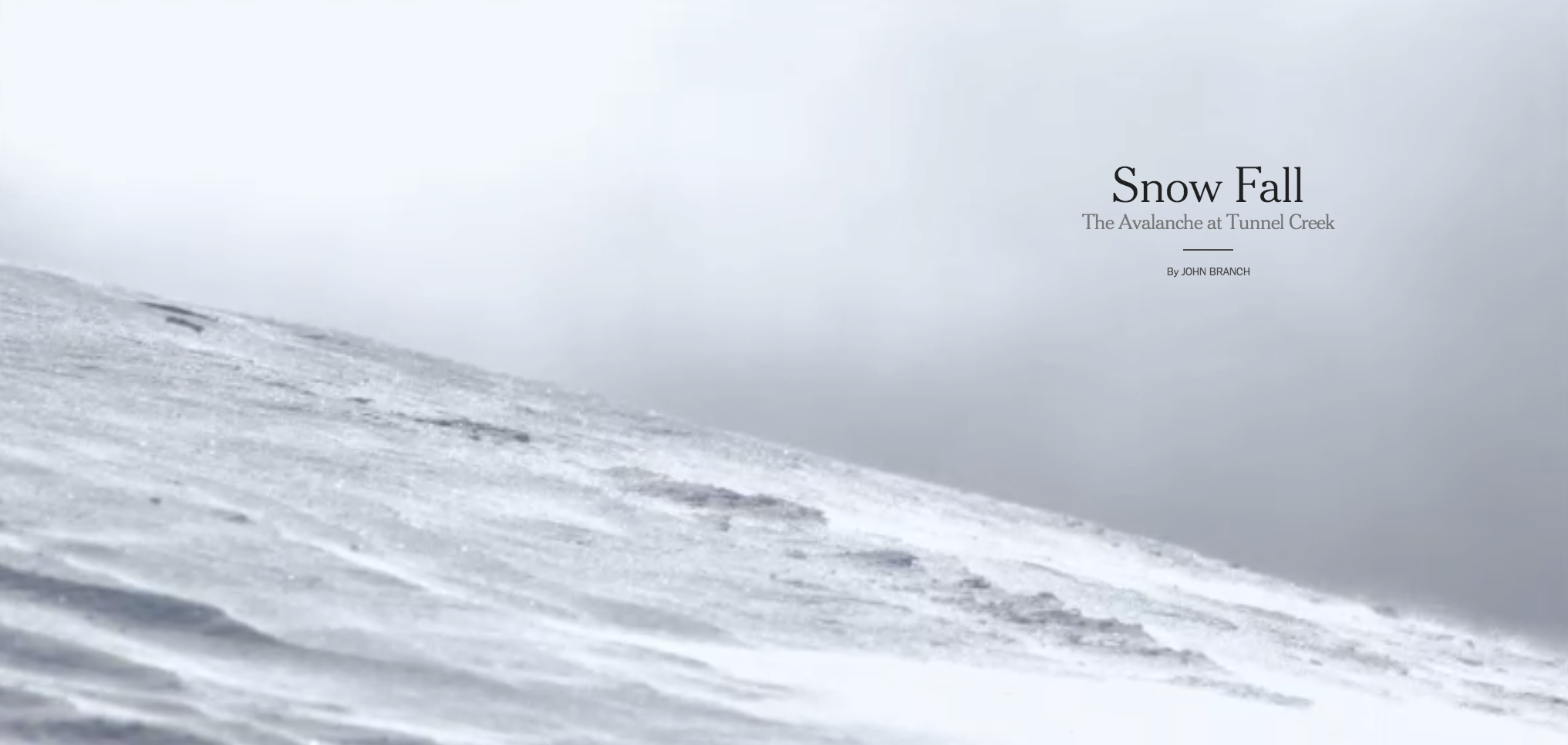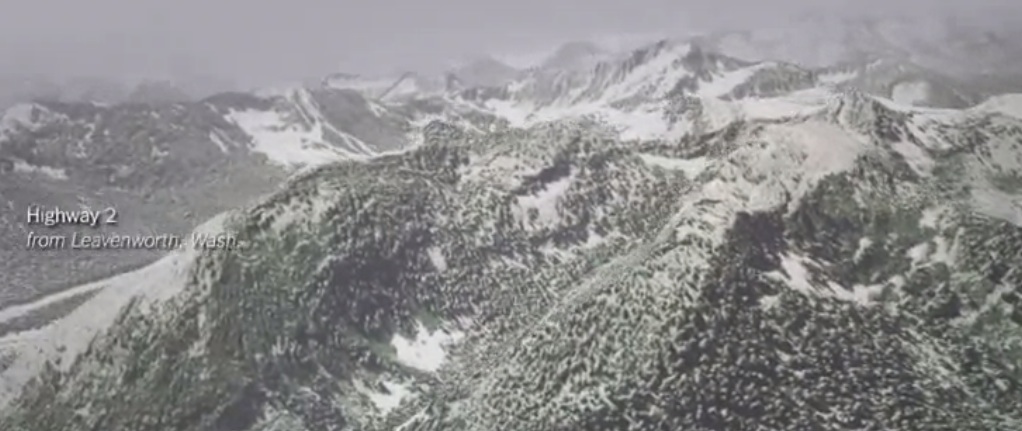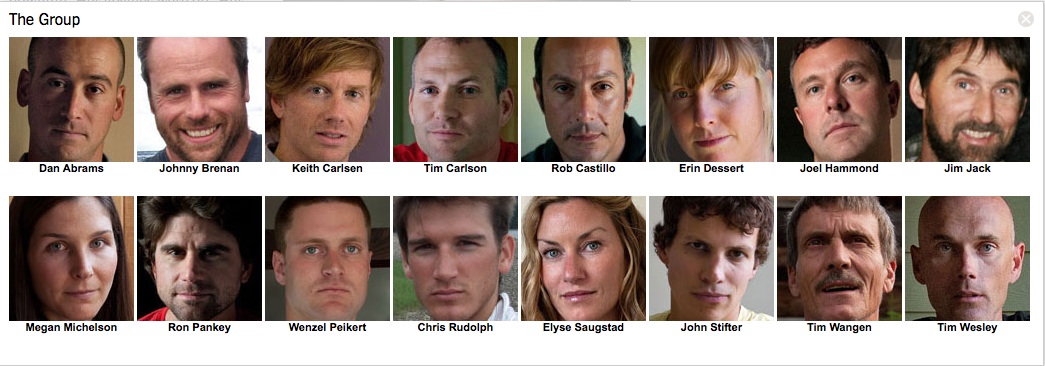Title: Snow Fall: The Avalanche at Tunnel Creek
Author: John Branch
Publication: The New York Times
Publication date: December 20, 2012
Experience here: http://www.nytimes.com/projects/2012/snow-fall/

In late October, on a sunny but chilly Thursday afternoon, I called John Branch to talk about Snow Fall, our first DRC Webtext of the Month. Below, in four-parts, I attempt to share that conversation, but mostly John’s part, his words. As engaging as Snow Fall is, so, too, are the author’s thoughts about the project. While we chatted, his comments struck me as a reader, a writer, and a teacher. At times, while he was talking, glimpses of the project came to mind: The snow moving across the screen in that opening image, the mountain rising as I scrolled through the first part. At times, his words invited me to think about my own writing projects and what digital technology might be able to do for a project beyond make it look cool or pretty. At times, I found myself planning future discussions with my composition students: “But tell me, should that image appear here? How does it serve the story, the argument you want to make?”
I hope it is the same for you, that you feel inspired not only by Snow Fall but by the project’s process and influence, by the opportunities and challenges it represents for storytelling in the 21st century.
***
Part I: The Process of Snow Fall
Snow Fall “started as germ of an idea about how to pack all the stuff in about avalanches.”
“Five or six weeks in,” John decided to “tell all stories of avalanches” as “the story of one avalanche.” At this point, he had a “giant file of quotes and notes” pulled together “into a tight minute by minute chronology.” This was, he admitted, “for my own sanity: who went down the mountain first, who said what when, who was thinking what when.”
Then, he did something “unusual.” He “took the file and sent it off to [his]editor.”
Then, the editor did something unusual. “He passed on [John’s] raw material to editors in photo, graphics, video, and said, ‘Sneak peak. This could be kind of great; at minimum, we are going to need your help.”
John was “proud of [the project’s]very organic process. Just a story that kind of grew. People came along and helped out, helped nurture it over several months.”
Part II: Snow Fall, the Product
“Steven Duenes, assistant managing editor, he had the vision for Snow Fall: melding text, graphics, videos.”
“In the past,” a final piece worked like this: “here is text, click on graphics, all very separate entities.” But Snow Fall was going to be different, designed to be “seamlessly orchestrated and multimodal, text flowing into graphics.” So you’re “reading, scrolling down, [and the]graphics take over the text.”
There was a “discussion about blending, needing to change the text, the need for transitions into spoken quotes.” But “in the end, the text didn’t change.”
“Snow Fall worked because of the multimedia…in a lot of ways.” Graphic elements “show you what the mountain looked like, show you the heart-wrenching interviews of the survivors.” That is, “Everything in the story helped the reader understand the story better.”

But that’s not all media helped Snow Fall as a story do.
John says, “The one way in which I wrote this a little differently would have to do with the characters. There were sixteen characters, thirteen survivors and three widows, who I blend throughout the story. Without multimedia, I’d tell the story through five or six people.”
“Multimedia as a crutch” for characters. “17,000 words, 16 characters.”
“Everyone was quoted at least once. I didn’t keep anyone out. In the end, I got everybody, and I thought if I got everybody, I want to use everybody.”

Part III: The Snow Fall Effect
Yes, it’s real. It’s talked about on blogs and presented about at conferences across the globe. And John says he hears of another Snow Fall-like story every few days. He says they are very cool, but the imitators “miss the mark” when they use “big graphics and scroll effects just for atmosphere,” not information.
So John’s advice to writers and students working with digital technology and media is simple, really: use media elements purposefully and well. “If it makes a stronger story, I am all for it.” “Multimedia needs to inform people, not just evoke atmosphere.” Writers need to ask of media, “what’s the added value to the story.” Designers need to ask of writers, “what elements would you like the reader to have?”
Part IV: A Post-Snow-Fall Future
For John, he’s “sure it will” change how stories are written, the stories that are told. Though he’s “always pretty good about thinking about graphics and videos, he still has not “reached a point of thinking of something as a multimedia project.” The first step is the same today as it has been in the past: “the story from the reporter, the words from the reporter.” Now, media come up in conversation not “before writing the story,” but while writing. And this is a change, a recent development.
For writers and reporters, it’s the “new heydey of long-form journalism.” “We’ve realized in the last decade not everyone wants blogs, tweets, and short bursts…People want something to sink their imaginations into.”
The question arises, then, “seeing more long-form, seeing more digital publishing: how they will blend.”
For writers, “it’s exciting.”
Still and digital publishing storm aside, John admits, “I like to think that there is always a place for print.”
***
I like to think so, too, but I’m glad we’ve made room for digital multimedia story-worlds like Snow Fall, and their innovative, inspiring writers.
